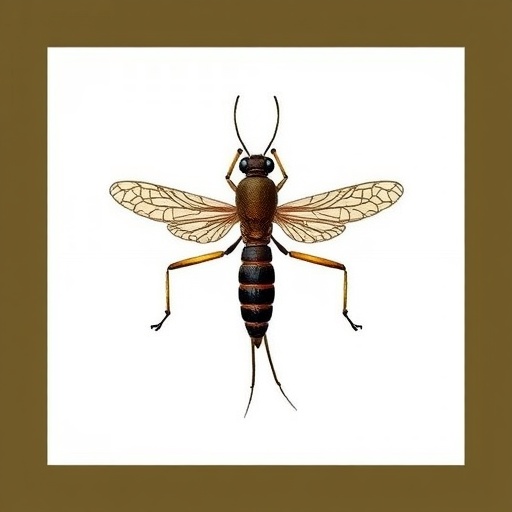As global concerns about climate change and public health intensify, the imperative to reduce reliance on industrial animal agriculture has never been clearer. Industrial animal farming is a significant contributor to greenhouse gas emissions, deforestation, and biodiversity loss, while also raising profound ethical and health-related questions. Experts in food science and sustainability now argue that innovative protein solutions—especially “hybrid” alternative foods combining proteins from multiple sources—offer a promising path forward to address these intertwined challenges.
In a groundbreaking lead article published in Frontiers in Science, Professors David Julian McClements and David L. Kaplan present a comprehensive analysis of hybrid protein foods. These composite products merge proteins derived from plants, fungi, insects, and cultured animal cells, aiming to create nutritionally robust, environmentally sustainable, and palatably convincing alternatives to conventional meat. Their research frames hybrid foods not just as replacements, but as transformational platforms capable of reshaping the global food landscape.
As articulated by McClements and Kaplan, one of the key strengths of hybrid protein foods lies in their ability to synergistically harness the unique attributes of each protein type. Plant proteins like pea or soy provide essential amino acids efficiently and sustainably, while fungal proteins offer distinctive textures and bioactive compounds. The addition of insect proteins brings a high nutrient density and a low environmental footprint, and cultured meat cells enable the replication of the sensory and cultural characteristics of traditional animal meat without associated ethical dilemmas.
Reducing the carbon footprint of food production hinges on innovative interventions in protein sourcing and formulation. Industrial animal husbandry accounts for approximately 14.5% of global greenhouse gas emissions, driven by methane from ruminants, land use change, and energy-intensive feed production. Hybrid foods can mitigate these impacts by lowering the volume of resource-heavy animal-derived content and integrating low-impact alternatives, thereby enabling significant emissions reductions. This aligns with broader climate change mitigation goals and offers a scalable solution for sustainable nutrition.
Nutritionally, hybrid proteins are designed to optimize the balance of macronutrients and micronutrients. Unlike monoculture protein products, hybrids can be engineered to enhance amino acid profiles, bioavailability of vitamins and minerals, and functional health properties such as antioxidative capacity or gut microbiome support. This precision in design addresses some limitations of existing meat analogues that rely solely on plant proteins, which often struggle to match the complete nutritional profile of animal meats.
However, advancing hybrid food innovation requires sophisticated understanding in food chemistry, protein biophysics, and sensory science. The interaction of diverse proteins during processing affects texture, flavor release, and product stability. Proteins sourced from fungi or insects possess markedly different molecular structures compared to muscle proteins, necessitating novel formulation techniques and ingredient engineering strategies. Research into protein aggregation dynamics, lipid-protein interactions, and enzymatic modification is pivotal to replicate desirable meat-like sensory attributes.
Despite promising scientific and technological underpinning, commercial implementation of hybrid proteins faces several hurdles. Consumer acceptance remains a critical barrier. Cultural norms, taste preferences, and psychological associations with meat affect willingness to adopt hybrid alternatives. Transparent communication on health benefits, environmental impact, and the production process will be essential to build consumer trust. Additionally, pricing hybrid products competitively against conventional meat is complex, influenced by raw material costs and processing scalability.
Regulatory frameworks worldwide are still evolving to accommodate such novel food products. The hybrid nature of these foods—combining diverse ingredient classes, including cultured cells and insects—complicates existing classification, safety assessment, and labeling protocols. Collaboration among scientists, policy makers, industry stakeholders, and regulatory authorities is imperative to establish standardized guidelines that ensure food safety without stalling innovation.
The sustainability of hybrid proteins extends beyond greenhouse gas emissions. Land use efficiency improves when animal-derived content decreases, alleviating pressure on deforestation hotspots and fostering biodiversity conservation. Moreover, water footprint reductions and decreased reliance on synthetic fertilizers contribute to more resilient agroecosystems. The ethical dimension is equally significant: reducing industrial animal use can alleviate animal suffering and align food systems with emerging societal values on animal welfare.
Future research pathways identified by McClements and Kaplan include exploring synergistic protein blends to optimize sensory and nutritional qualities, advancing fermentation and cell cultivation technologies to improve yield and reduce costs, and developing computational models to predict interactions among combined protein sources. These multidisciplinary efforts will accelerate the translation of hybrid protein concepts from lab-scale innovation to mainstream markets globally.
Recognizing the complexity and urgency embedded within these challenges, the scholarly community is gathering momentum. An upcoming Frontiers Forum Deep Dive webinar scheduled for October 22, 2025, will bring together experts to dissect these opportunities and impediments further. Dialogue among scientists, food technologists, regulatory bodies, and commercial innovators will catalyze actionable strategies to mainstream hybrid alternative protein-based foods.
Ultimately, hybrid proteins embody a compelling vision for the future of food—one where nutrition, sustainability, affordability, and taste are co-optimized through cutting-edge scientific innovation. They represent a potential inflection point in the food system’s evolution, harmonizing human health and planetary stewardship while navigating cultural and economic realities. The emergence of these multifunctional foods could redefine dietary norms and significantly contribute to mitigating the climate crisis linked to food production.
In conclusion, while formidable challenges lie ahead, the hybrid protein paradigm holds transformative potential. It strategically leverages advances in protein science, sustainable agriculture, and cellular biology to craft next-generation foods that satisfy ethical, environmental, and nutritional needs. Continued interdisciplinary collaboration and supportive policy frameworks will be essential to realize this potential and build a healthier, more sustainable global food supply chain.
Subject of Research: Sustainable food production through hybrid alternative proteins combining plants, fungi, insects, and cultured meat.
Article Title: Hybrid alternative protein-based foods: designing a healthier and more sustainable food supply.
News Publication Date: Not explicitly stated; webinar scheduled for 22 October 2025.
Web References:
Frontiers in Science article
Frontiers Forum Deep Dive webinar registration
Keywords: Food production, Food science, Foods, Global food security, Sustainable agriculture, Nutrition, Animal rights, Ethics, Animal cells, Climate change mitigation, Anthropogenic climate change, Climate change, Sustainability, Human health, Insects, Fungi.




